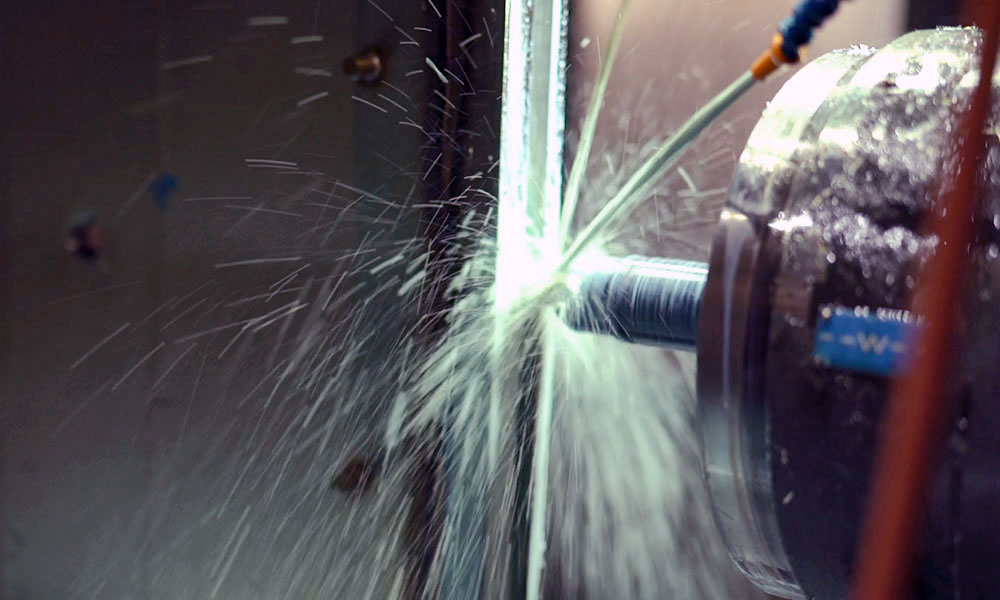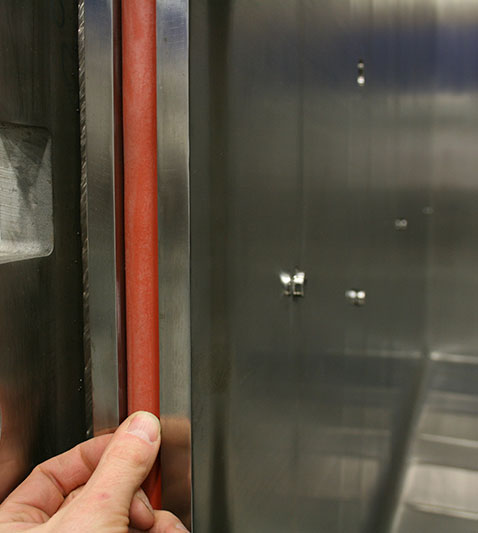How the machining process during the autoclave manufacturing impacts door gasket life.
For many who are in the process of considering an autoclave manufacturer, there is often little thought put to the actual manufacturing process. Instead, the focus is typically centered around the PLC control system, HMI, and service technicians. To be fair, these components of an autoclave purchase are important as the PLC and HMI operate as the brain of the autoclave with service technicians operating as the doctor whose task is to keep the autoclave running effectively and efficiently. However, one of the many components of the manufacturing process that must be considered is how machining the door gasket grooves, completed during the autoclave manufacturing process, impacts gasket longevity.

In the manufacturing process, the gasket groove is cut into the door plate with a CNC machine with exact precision and tolerances measured in hundredths of an inch. The manufacturing process welds the ASME vessel (aka the autoclave chamber) to the door plate before the gasket groove(s) are cut into the door(s) plates. For small autoclaves, such as the 20” x 20” and 26” x 26” chamber sizes, nearly all autoclave manufacturers are capable of following the aforementioned process with machining centers that have the capability to cut door plates with those dimensions. For larger autoclaves, many manufacturers are not capable of following the same manufacturing process because of the limitations of their CNC machines. Instead, this part of the manufacturing process is reversed. The gasket groove is machined into the door plate first, and then the door plate is welded to the chamber.
Why does this matter in how I use my autoclave?
The reversal of the process opens the door gasket groove to subtle warping caused by welding the door plate to the autoclave chamber. As stated above, machining centers cut precise gasket grooves with tolerances down to hundredths of an inch. During the manufacturing process the accuracy of the gasket groove is one of, if not the biggest, predictor of gasket performance and longevity. With even subtle warping during the welding process, a pre-cut gasket groove can warp enough to cause faster degradation of the door gasket.
In the long-term, subtle yet additional degradation of the gasket caused by a slightly inaccurate gasket groove can cause premature gasket failure. Over the lifespan of an autoclave this would increase cost-of-ownership and create additional downtime events caused by gasket failure. Based on feedback from service technicians across the country, gasket life cycle can be cut by 50%. Costs could vary significantly depending on the size of the autoclave door, but the costs could equate to hundreds of dollars per year in unnecessary costs.
At Beta Star, machining centers are capable of machining all of the autoclave chamber sizes after door plate and chamber welding has been completed. This includes the largest chamber we’ve ever manufactured on a 64” wide x 92” height x 96” depth autoclave. By partnering with Beta Star, you can reduce gasket lifespan issues that come from manufacturing.

More Autoclave Manufacturer Topics to Know
For more information about what to consider when selecting an autoclave manufacturer, visit the Autoclave Manufacturer post or any of the subtopics listed below:
- Why trusting a Single Source, USA Manufacturer matters.
- Why working with a custom autoclave manufacturer matters for your existing building project.
- What would carbon/stainless cross-contamination mean for my autoclave?
